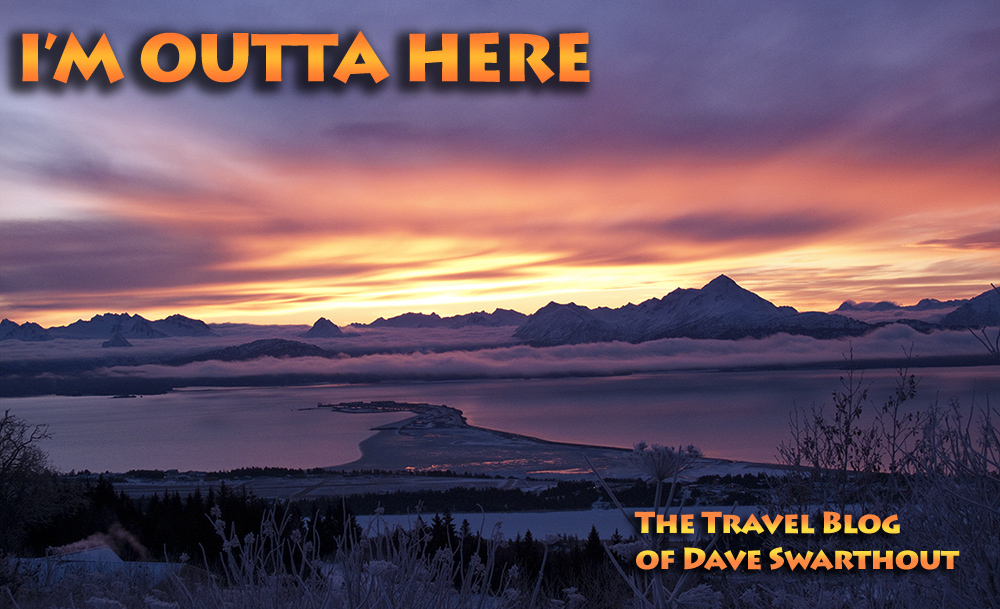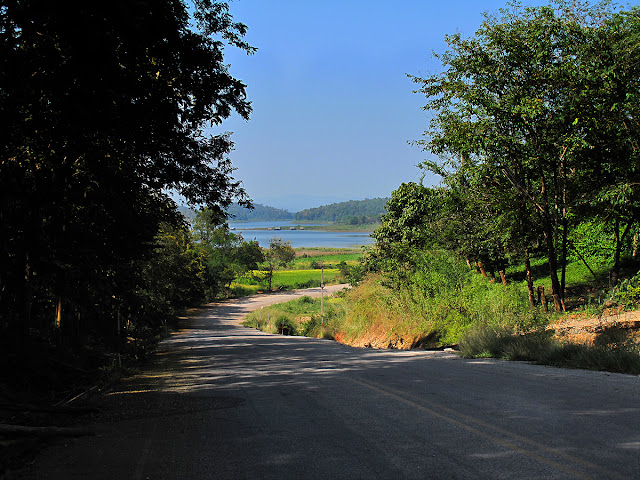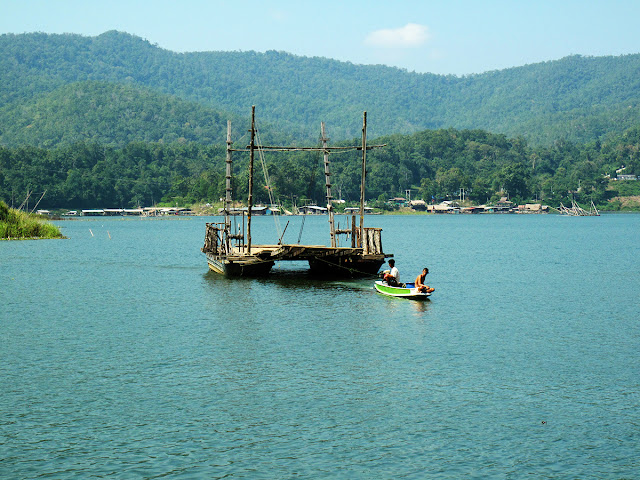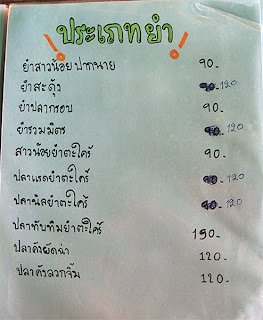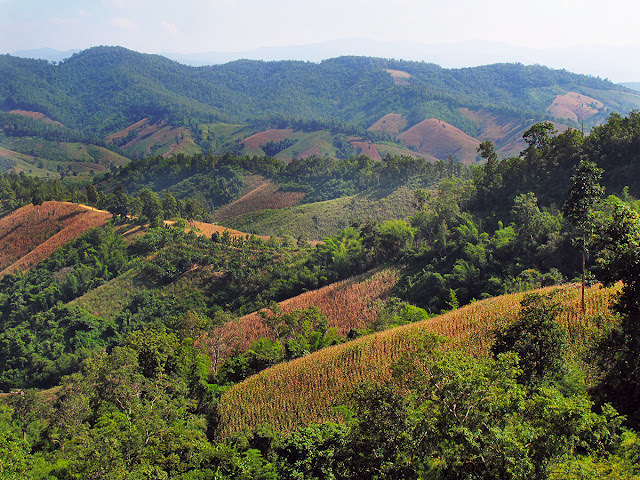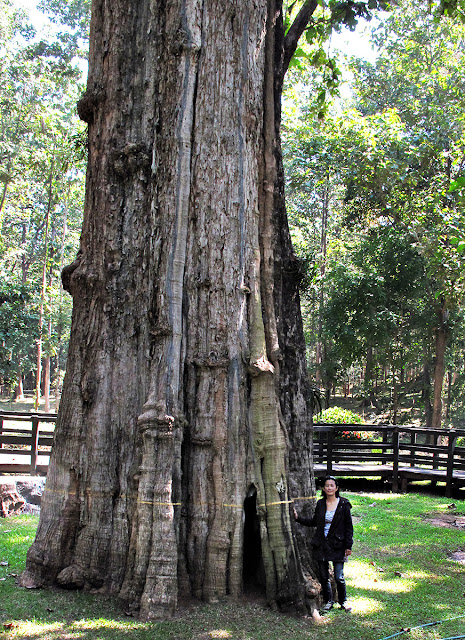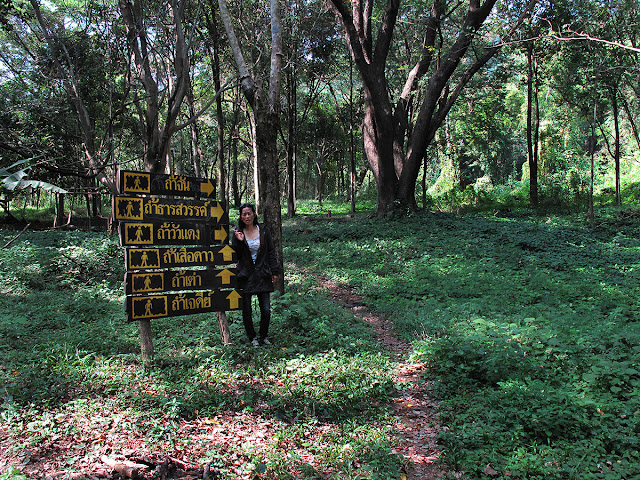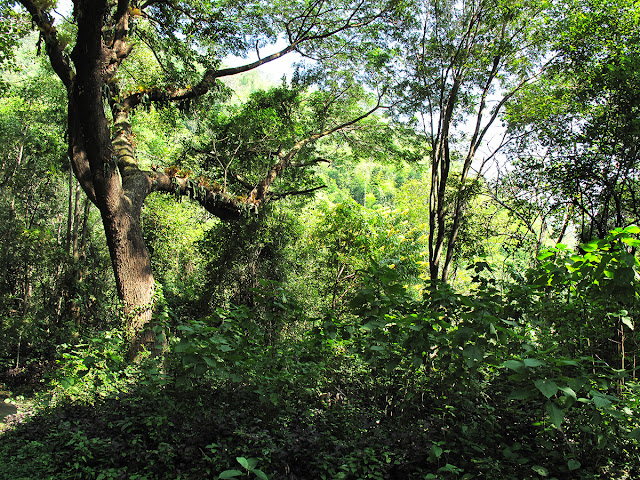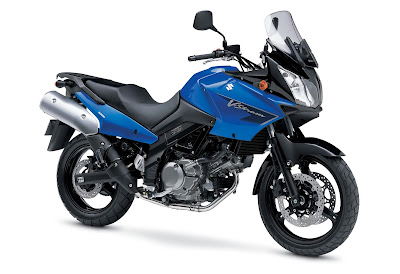Nut and I are about to leave Thailand for a couple of weeks. We'll be making a two-day trip via slow boat to Luang Prabang, in Laos, down the Mekong River from Chiang Khong the day after tomorrow. We're back in Chiang Mai at the moment and I've just returned our rented motorcycle so that part of the trip is over. We had a wonderful ride that ended well -- no accidents nor even any close calls, a small miracle for having driven 3 or 4,000 km in Thailand, sometimes known as the Land of Smiles; at the same time it's a country where many of the drivers are absolutely insane. I must add here that, while it can get crazy at times, the drivers of most larger vehicles thankfully seem to be aware of and act courteously toward moto drivers.
We arrived in Chiang Mai a few days ago, on the 20th, and got here just in time for the Loy Krathong festival. It was fun and and a wonderful experience that I'll try to cover in another post. But I want to describe our last day of motorcycle adventuring which took place on a day trip out of Chiang Rai on the 19th. We went to the Queen Mother's summer residence in Doi Tung at the extreme northern tip of Thailand near the junction of its boundary with those of Laos and Myanmar. The trip up and back was another fabulous biking experience on beautiful roads in perfect conditions.
 |
| On the road to Doi Tung - Rte 1138 (above and below) |
The Queen Mother's estate is a work of art; it's a beautiful mansion situated on a high hilltop in rural Thailand surrounded by artfully constructed, carefully manicured and meticulously maintained flower gardens. It is hard to describe the veneration accorded the royal family here in Thailand. Although many Thais live impoverished lives their king is one of the wealthiest people on the planet. His property holdings are extensive, and totally private, he is a major stockholder in some of Thailand's biggest firms, owns something like 3500 acres of prime real estate in Bangkok -- the list goes on. But he's a good man by all reports and people simply love him despite the disparities in incomes and the quality of their lives. There are laws on the books to protect his image as well. If you speak against him (or any of the royals) by criticizing him publicly for example, you can be sent to jail for up to 15 years or even longer if the offenses are deemed serious enough. No free speech here I'm afraid. Even farangs have been jailed for slandering the king so everyone must be diplomatic in discussions thereof. I explored the topic of the king's wealth with Nut the other day.
I asked, "Are you concerned that your king is so wealthy?"
She replied, "No, because he's a good man and he works hard for the people."
I said, "You work harder than him I'm sure." (She works 7 days a week, 12 hours a day and can barely pay her $200/month rent in the off season).
She said, "Not important. He is our king."
End of discussion.
Back to the queen mother's residence on Doi Tung. This place was essentially a summer palace. The queen mother is long gone but her estate has been turned into a public park. Cameras are prohibited inside the residence proper, which is consistent with the manner in which the royals are protected, but I can tell you it's a place "fit for a king". The art and furnishings are beautiful, the solid hardwood floors smooth and gleaming, the views from the many verandas stunning.
 |
| This guard wouldn't smile or answer but when asked his buddy said, Sure, you can take a photo |
When I was in Versailles and Fontainebleau last year I marveled at the spacious rooms, sumptuous furnishings, the exquisite art, and wondered what it might have been like to have been a French peasant in the 1700s seeing the royals living the way they did while you could barely keep food on the table. This place is similar in that sense although far smaller in scale.
We toured one other nearby place, an arboretum that while not as opulent or extensive had some interesting features. We ran into an old Burmese gardener who was eager to show us some very old (he claimed one was over 900 years old), magnolia trees and other points of interest. He took us to a viewing platform named, I think incorrectly, Tri Cities Viewpoint because from its vantage point you can see three countries, Myanmar, Laos and Thailand. Embedded in the ground directly behind the platform was a metal marker of the kind surveyors use to mark important locations, called "bench marks" in American jargon. He told us it was a boundary marker and that Myanmar was on one side and Thailand on the other. He shot this photo of Nut and I with one foot in each country. I recorded a GPS waypoint for future reference.
The ride back to Chiang Rai was spectacular. We first rode north on Route 1149 along a narrow ridge right alongside the border with Myanmar that provided superb viewing on both sides. The road was narrow and the descent to Mae Sai very steep. It descended in a series of tight switchbacks -- probably the steepest road I've driven in Thailand -- which meant a lot of first gear engine braking along with constant hydraulic braking to keep our speed below 15 mph.
 |
| View east from Rte 1149 |
 |
| View west to Myanmar from Rte 1149 |
Obviously, there is plenty of exploration to be done around Chiang Rai and the north of Thailand in general. I think this trip was a fitting way to end our motorcycle expedition. You simply couldn't ask for better conditions or lovelier scenery. But we had reservations in Chiang Mai for the next night, the first of three nights of Loy Krathong celebrations, and hotel space was in short supply so this trip officially ended the tour. We drove the fast highways south next day to Chiang Mai and after a few hours were back at our hotel. I haven't tallied the total distance we drove but I'm pretty sure it's in the neighborhood of 1500-2000 miles. It was a hell of a nice trip.
Next stop, Chiang Khong, and after that Luang Prabang. Talk to you soon.
